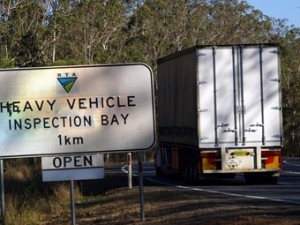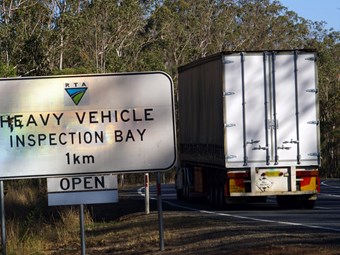Changes to Heavy Vehicle Inspection Regime to Improve Roadworthiness

Transport ministers have approved changes to Australia’s heavy vehicle inspection regime. Source: Fullyloaded.com.au
The National Heavy Vehicle Accreditation Scheme (NHVAS) was recently amended in an effort to improve road worthiness standards. Now the Federal infrastructure minister says that the new arrangements under the NHVAS will put the nation on the road to “risk-based assessment standards”.
The changes were approved by transport ministers and will affect heavy vehicle inspection throughout Australia and hopefully improve heavy vehicle road safety by focusing on heavy vehicle roadworthiness.
The federal government claims that these changes to the National Heavy Vehicle Accreditation Scheme (NHVAS) will facilitate the shift to risk-based roadworthiness inspections.
In a recent article on Fullyloaded.com.au the changes were discussed and the Federal Infrastructure Minister Warren Truss was quoted as saying that the changes will mean a new nationally consistent approach to roadworthiness.
Proposals put forward by the National Transport Commission (NTTC) and the National Heavy Vehicle Regulator (NHVR) was approved by the country’s transport ministers last week which resulted in the amendment of the NHVAS.
Warren Truss, federal infrastructure minister said that the changes would improve auditing arrangements. Truss went on to explain:
“These new arrangements are important to adopting a nationally consistent risk-based approach to heavy vehicle roadworthiness,” Truss says.
“Auditors will have until July 2016 to transition to the new arrangements. The changes also mean truckies will no longer be able to choose their auditor.”
Source: http://www.fullyloaded.com.au
If you were wondering how the changes came into effect so quickly, Truss explained that the ministers agreed that fast tracking the development of a heavy vehicle compliance and surveillance strategy would be the best course of action. He said that the amendments would focus on national efforts to achieve long-term safety improvements.
Truss also stated:
“The changes are important for a national framework that targets heavy vehicles for roadworthiness inspections, as well as managing and clearing heavy vehicle defects,” he says.
Source: http://www.fullyloaded.com.au
The article went on to explain that the NTC and the NHVR also presented their regulatory impact statement (RIS) on heavy vehicle roadworthiness. The transport ministers collectively agreed that the RIS would be released publicly in early 2015 for comment. Truss went on to explain:
“The RIS will canvass options for improving the roadworthiness of heavy vehicles,” Truss says.
“Public consultation is a good opportunity for interested parties to have their say on options for a national heavy vehicle roadworthiness program.”
Source: http://www.fullyloaded.com.au
Truss explained that a risk based approach to roadworthiness would involve authorities targeting trucking operators who had a bit of a reputation for poor compliance. The article on Fullyloaded.com.au went on to explain that at the moment compulsory periodic inspections are taking place in NSW, Queensland and the Northern Territory, which some truck operators aren’t too pleased about. In fact Toll apparently asked the NTC to put an end to these periodic inspections. The article went on to explain:
Annual inspections in South Australia are restricted to B-doubles, road trains and vehicles not enrolled in an approved accreditation scheme.
Western Australia and Tasmania do not require periodic inspections, while inspections in Victoria take place when vehicle ownership changes hands.
Toll recently wrote to the NTC requesting an end to periodic inspections.
Source: http://www.fullyloaded.com.au



